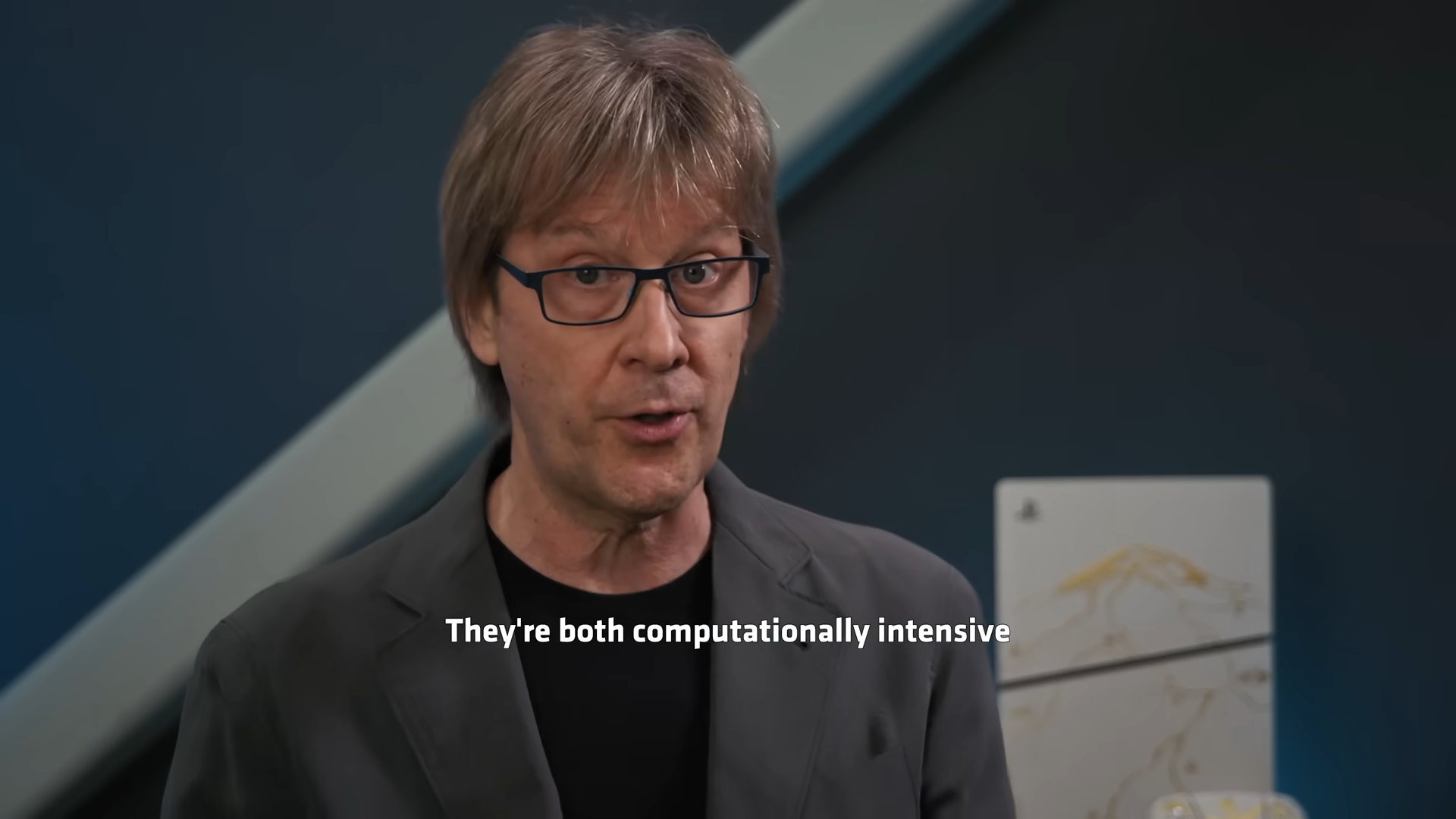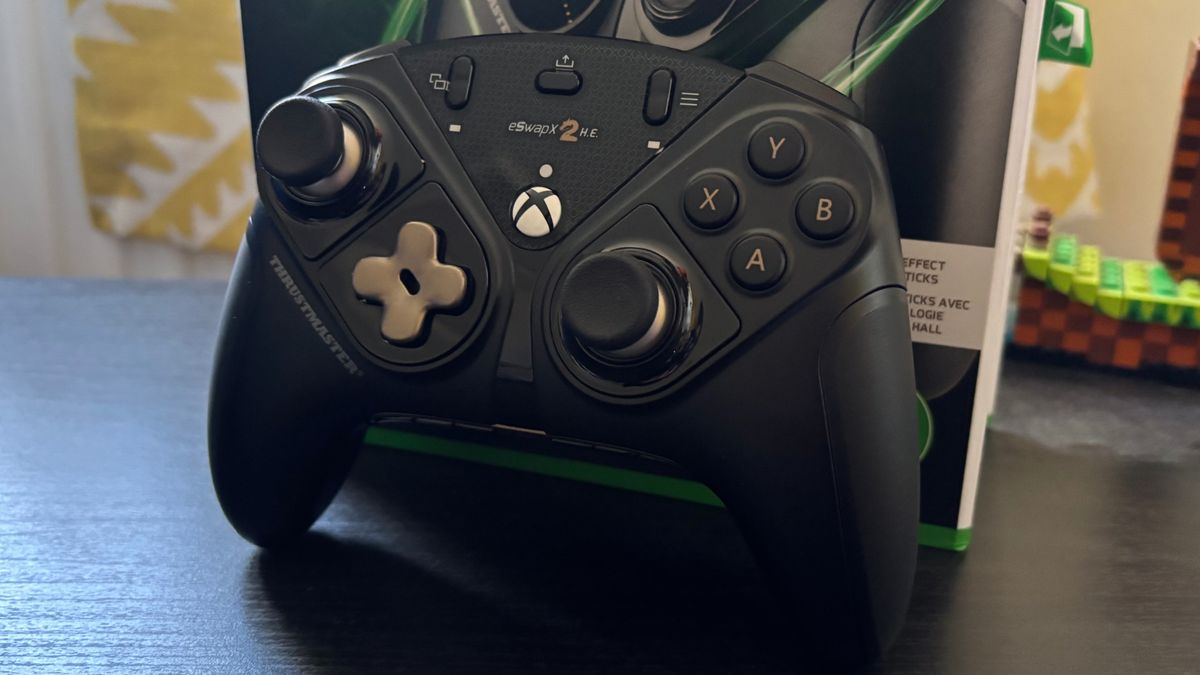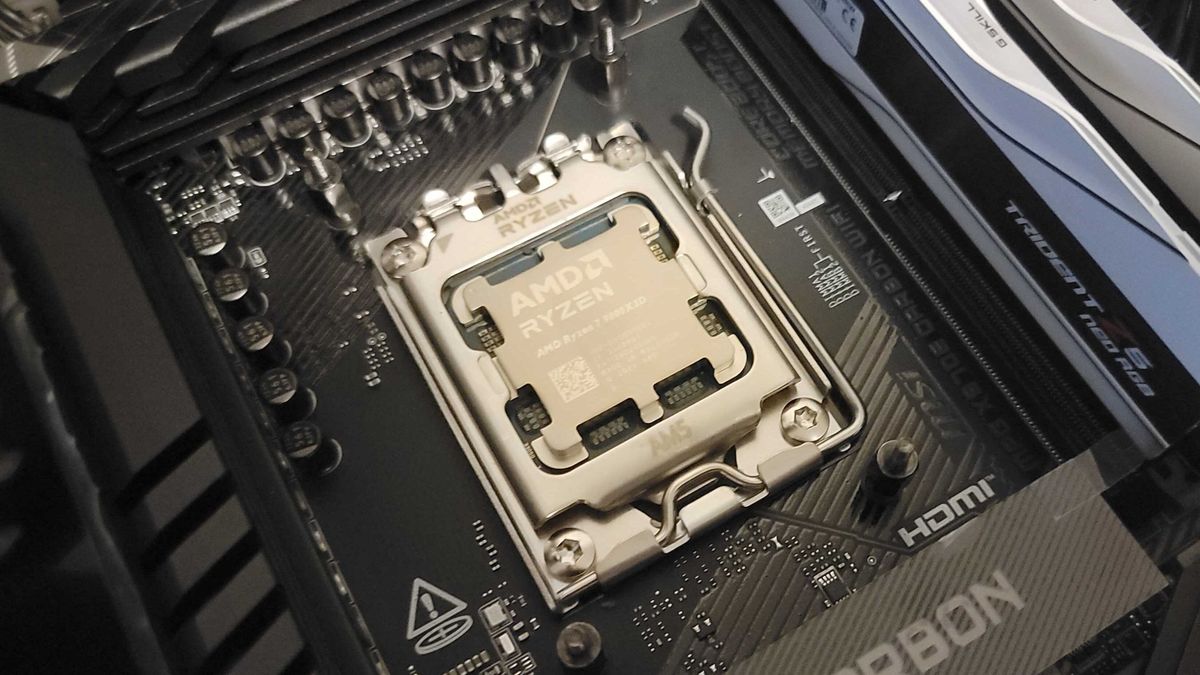Sony is finally spilling the beans on some of the hardware upgrades it will be bringing to its next-generation console. AMD's senior VP and general manager of computing and graphics at AMD, Jack Huynh, and Sony's PS5 Lead Architect, Mark Cerny, published a collaborative video discussing new technologies that are being worked on as part of their collaboration, Project Amethyst. Some of these technologies include massive upgrades to AI rendering and ray tracing performance. The new hardware is likely to be part of the PlayStation 6, or possibly a handheld option.
Most of the nine-minute video discussed two new technologies that the two companies are working on together: Neural Arrays and Radiance Cores. Neural Arrays represent an optimization toward the AI-accelerators housed in each compute unit of AMD's modern RDNA architectures, which will network all of the CUs together.
From Project Amethyst to the Future of Play: AMD and Sony Interactive Entertainment’s Shared Vision - YouTube

This feature will reportedly allow a GPU to process a "large chunk of the screen in one go". The duo didn't go into significant detail about the new technology, but on the surface, Neural Arrays appears to be an "Infinity Fabric" style interconnect that will connect every single compute unit together and allow each compute unit to talk to each other directly without spilling out to cache.
One interesting tidbit is that this feature appears to be targeted exclusively toward improving AI-rendering performance, despite the fact that Neural Arrays apparently connects the entirety of each compute unit together (not just the AI portions of the CU).
Radiance Cores represent a new dedicated hardware block on a GPU that will reportedly speed up ray-traced rendering significantly and make real-time path-tracing possible. Radiance Cores takes the ray transversal part of the ray tracing pipeline and takes full control of it, processing it independently of the shader cores to speed up rendering time.
Memory compression is also getting a big upgrade; AMD and Sony are moving to a new technology called Universal Compression that allows all data types to be compressed "whenever possible". This is a big change from the PS5 series' outgoing compression implementation (Delta Color Compression), which can allegedly only compress certain data elements, including textures and render targets.
The introduction of these technologies, particularly Neural Arrays and Radiance Cores, shows that the next-generation Sony console (probably the PS6) will be designed to play ray-traced and path-traced games with equivalent performance to PC graphics card hardware that we have today. Cerny and Huynh also all but confirmed that the next-gen console will take full advantage of FSR Redstone and its suite of machine learning features.
The PS5 and PS5 Pro technically have ray-tracing capabilities, but they are noticeably worse than what Nvidia or even AMD's latest GPUs are capable of (especially relating to the vanilla PS5). If you haven't caught on by now, Project Amethyst is the codename for Sony's next-generation console, which will likely be the PS6, but it could potentially include a handheld counterpart as well, as some outlets have speculated.
Arguably, the best part is that we can expect all of these technologies to make their way into future AMD graphics cards. Jack Huynh confirmed that the Universal Compression tech will be coming to future AMD SoCs and GPUs. Mark Cerny has also played a role in developing RDNA 5, so it is almost inevitable that Radiance Cores and Neural Arrays will be debuting in AMD's next-generation gaming GPU architecture.
Cerny also took a brief moment to tease the timeline of Project Amethyst, noting that these technologies will come to a "future console in a few years' time".
Follow Tom's Hardware on Google News, or add us as a preferred source, to get our up-to-date news, analysis, and reviews in your feeds. Make sure to click the Follow button!

 3 weeks ago
51
3 weeks ago
51









 English (US) ·
English (US) ·